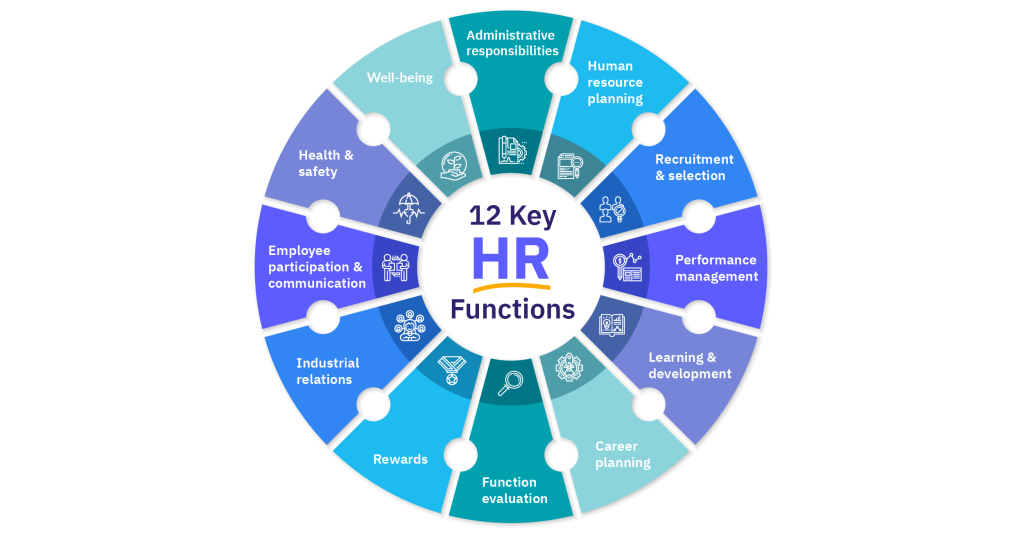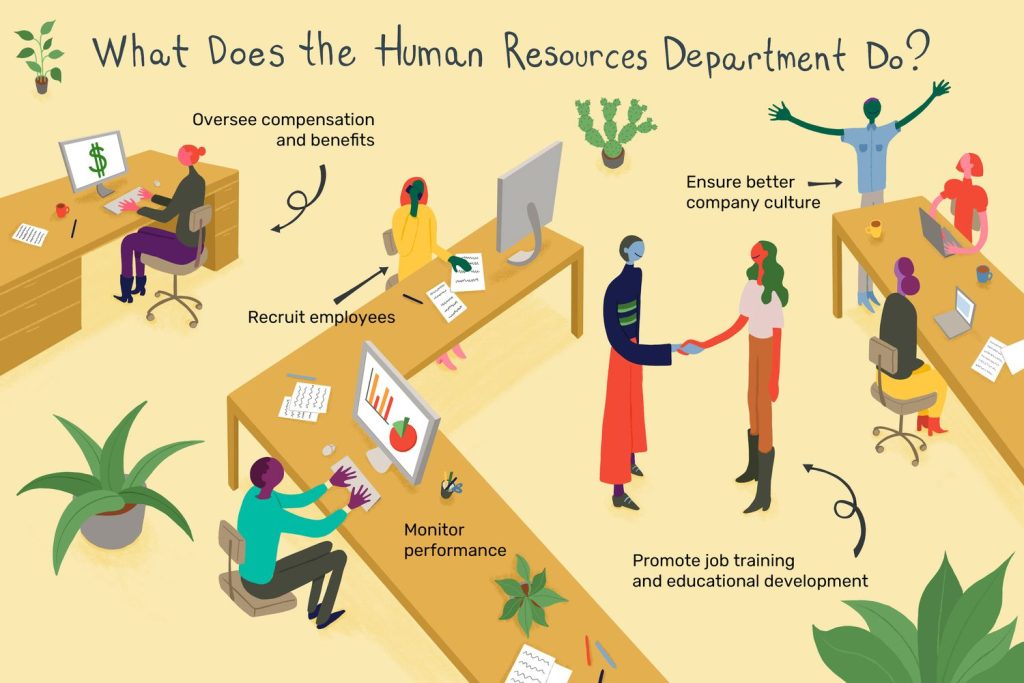Any organization’s core is its human resources (HR) department. It includes a broad range of tasks linked to overseeing the people that make up a company’s most valuable asset. This essay explores the field of human resources, emphasizing two vital duties: hiring and recruitment.
The Harmony of Human Resources (HR): Plethora of Duties
Human Resources (HR) specialists have numerous hats to wear. Their duties cover a wide range of tasks, such as:
Recruitment and Hiring
Attracting competent applicants, reviewing resumes and applications, holding interviews, and selecting prospects for hire are all part of the recruitment and hiring process.

Employee Relations
By addressing issues, resolving conflicts, and encouraging a favourable work environment, HR builds strong relationships with employees.
Pay and Benefits
Human Resources (HR) establishes salary ranges, manages employee benefit plans, and makes sure labour regulations are followed.
Performance Management
Human Resources (HR) manages performance reviews, gives feedback, and assists employees in setting goals.
Training and Development
Human Resources (HR) creates and carries out training initiatives to give staff members the abilities and information necessary to succeed in their positions.
Putting Together the Ideal Team: The Hiring Procedure
The process of drawing in and selecting competent applicants for available opportunities is known as recruitment. It serves as a link between brilliant people and companies looking for qualified talent. This is an outline of the hiring procedure:
Job Analysis
Knowing the prerequisites for the available position is the first step. Hiring managers and HR specialists collaborate to create the job description, which includes the necessary education, training, and experience.
Finding Candidates
HR can locate possible candidates by having a thorough understanding of the position. This entails using a variety of strategies, such as attending industry events, using online job boards, professional networking websites, and employee recommendations.
Application Screening
Human Resources (HR) reviews applications based on the requirements listed in the job description after they are received. The applicants with the most appropriate qualifications are selected from the pool of candidates thanks to this preliminary screening.

The Skill of Choosing: The Employment Procedure
After a group of suitably competent applicants has been found, the hiring procedure starts. To determine who is the best fit for the position, a thorough review is required. The following are some crucial actions:
Interviews
An essential step in the employment process is the interview. Interviews are conducted by HR and hiring managers to evaluate a candidate’s qualifications, background, and organizational culture. It is possible to use a variety of interview forms, including panel interviews, one-on-one interviews, and technical interviews.
Testing
To evaluate a candidate’s knowledge and talents related to the role, tests such as aptitude or skills assessments may be given, depending on the position.
Reference checks
To learn more about a candidate’s work performance and demeanour, HR contacts prior employers or superiors to inquire about the candidate’s professional background.
Selection and Offer
Human Resources (HR) works with hiring managers to choose the candidate who best fits the requirements and fits with the corporate culture after taking all relevant aspects into account. An official job offer including the terms of employment is extended when a decision is made.
Explore More Growth Strategies for Scaling Success

Trends Affecting Hiring and Recruitment
The employment and recruitment industry is a dynamic one. The following are some significant trends reshaping the environment:
The Rise of Technology
Technology is becoming more and more important in the hiring process. The application process is streamlined by applicant tracking systems (ATS), and online platforms provide new ways to find and interact with talent.
Emphasis on Candidate Experience
Businesses understand how critical it is to give prospective employees a satisfying recruitment experience. Top talent is becoming more and more dependent on aspects like efficient application processes, frequent updates, and clear communication.
Changing Skill Landscape
The competencies needed to succeed in many different industries are evolving quickly. Human Resources (HR) professionals must remain current with evolving skills and industry trends to find qualified applicants for positions of tomorrow.
Diversity and Inclusion
When it comes to their workforce, organizations are giving diversity and inclusion a higher priority. HR is actively working to promote an inclusive culture within the company and draw in talent from a variety of backgrounds.
Talent Management in the Future: A Strategic Approach
Making sure a business has the right people in the proper jobs is crucial, and Human Resources (HR) plays a major part in this. HR will carry on developing in the future, adopting a more strategic approach to personnel management. Here are a few fascinating options:
Data-Driven Decisions
HR will use data analytics to discover high-potential workers, obtain a better understanding of the talent pool, and streamline the hiring procedure.
Emphasis on Employee Engagement
HR will be essential in promoting continual learning and development, a positive work environment, and employee engagement.
Integration of Artificial Intelligence (AI)
HR practitioners could be able to concentrate on more strategic aspects of talent acquisition and retention by utilizing AI to help with duties like resume screening and preliminary candidate assessments.










